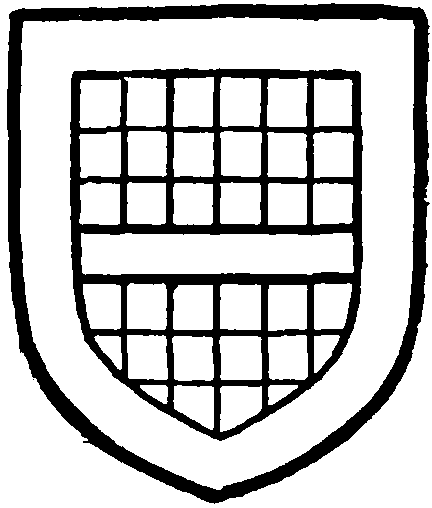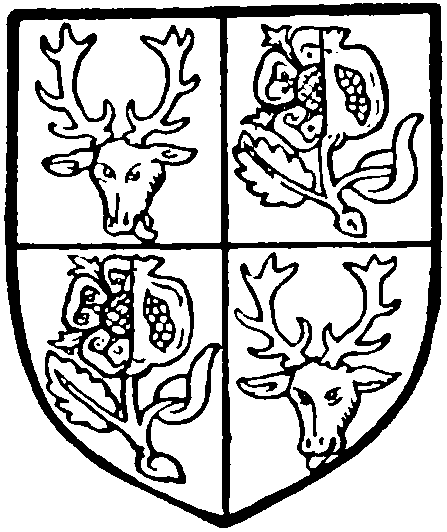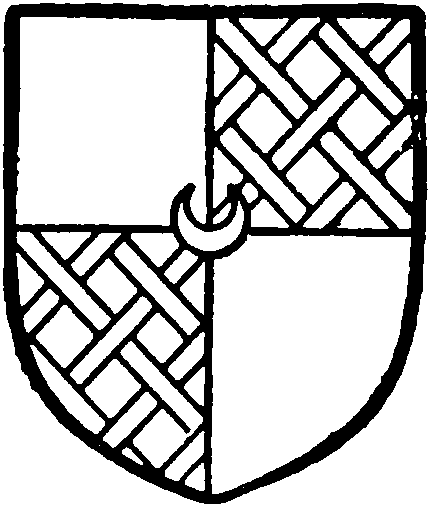A History of the County of Hampshire: Volume 3. Originally published by Victoria County History, London, 1908.
This free content was digitised by double rekeying. All rights reserved.
'Parishes: Hinton Ampner', in A History of the County of Hampshire: Volume 3, ed. William Page (London, 1908), British History Online https://prod.british-history.ac.uk/vch/hants/vol3/pp321-323 [accessed 7 February 2025].
'Parishes: Hinton Ampner', in A History of the County of Hampshire: Volume 3. Edited by William Page (London, 1908), British History Online, accessed February 7, 2025, https://prod.british-history.ac.uk/vch/hants/vol3/pp321-323.
"Parishes: Hinton Ampner". A History of the County of Hampshire: Volume 3. Ed. William Page (London, 1908), British History Online. Web. 7 February 2025. https://prod.british-history.ac.uk/vch/hants/vol3/pp321-323.
In this section
HINTON AMPNER
Hentune (xi cent.); Henton (xii cent.); Hinton Ampner or Amner (xiii cent.).
The parish of Hinton Ampner contains 2,378 acres of land rising gradually from west to east to a height of more than 400 ft. above the sea level.
Hinton Park, covering an area of 66 acres, in which is Hinton House, the seat of Mr. Henry John Dutton, fills up the whole of the north-west of the parish; immediately east of the park is the village, and from here the parish stretches eastward in a long irregular tract away to Brookwood in the south-east. 'Brookwood' is the residence of Mr. Daniel Meinertzhagen, and stands in a finely wooded park of 86 acres through which the house is approached by two good drives. As the main road from Winchester to Petersfield sweeps over Lane End Down and leaves Cheriton parish at Lane End hamlet, the Jolly Farmer Inn, standing on the south of the road, seeming locally in Cheriton, marks the beginning of Hinton Ampner parish. North of the road is the low-lying country of Hinton Marsh, a few yards south of which the Itchen tributary, which runs through Cheriton, has its beginning. Along the south side of the road are the rising grounds of Hinton Park, up which winds one of the carriage drives to Hinton House, though the house itself, standing further south-west among the trees over the brow of the hill, is hidden from the road. About a quarter of a mile east of the 'Jolly Farmer' a steep lane branches south from the main road, and here and there on either side of this, as it runs uphill between high banks and overhanging trees parallel with the grounds of Hinton House, the cottages of the village for the most part lie. Several, one group especially which lies back behind long narrow gardens, are half timbered and thatched and most picturesque in appearance. At the top of the hill beyond the rectory, which stands high on the left hand, the road branches south-east to Brookwood and south-west towards Kilmeston. Here, close on the road to the west, but actually within the grounds of Hinton House, is the church of All Saints, still west of which, half hidden from view by the thickness of the trees, is Hinton House itself. From here the ground falls away to the south, so that the house, standing on the slope nearly 400 ft. above the ordnance datum, commands a wide view, with Kilmeston immediately in the south, while away to the south-west beyond Kilmeston rises Millbarrow Down. Several cottages and farm buildings lie east of the church along the road which runs southeast to Brookwood.
Apart from the main group of houses thus clustered near the church and manor-house, as the turnpike road runs east to Petersfield, between wide stretches of green sward bordered by copper beeches and other fine trees, or past occasional clearings with high stacks of brushwood, every here and there scattered along the road are other cottages belonging to Hinton Ampner village. Here also south of the road, about midway between Bramdean and Hinton Ampner, is the schoolhouse, a red-brick building dating from 1861, near which is the police station, facing a fine clump of tall pine trees.
The inhabitants are mostly employed in agriculture, since the soil is clay loam with a subsoil of chalk producing ordinary root and green crops.
The greater proportion of the 1480¼ acres of arable land are in the centre of the parish intermingled with the 561¼ acres of permanent grass land. Of the 151½ acres of woodland the largest group is in the south of the parish close to Kilmeston.
Joan's Acre, Whitehill, Broomwood, and Lamborough Road are still existing place-names which were mentioned in a Close Roll of 1650, (fn. 1) and undoubtedly date back to a much earlier time.
MANORS
The manor of HINTON or HINTON AMPNER was held by the bishop of Winchester at the time of the Domesday Survey, it had always belonged to the Church; the manor was assessed at eight hides and was worth 100s. (fn. 2)
Hinton Ampner was among the manors confirmed to the prior and convent of St. Swithun, Winchester, in 1205, and again in 1285. (fn. 3) The manor was appropriated to the office of almoner of St. Swithun's (hence the name Ampner which is a corruption of almoner); it defrayed the expenses of the almoner's office and the almoner held the manorial courts either in person or by his bailiff. (fn. 4)

Stewkeley. Checky argent and sable a fesse and a border gules.
The manor remained in the possession of the priory of St. Swithun until the Dissolution (fn. 5) when it passed with the other manors belonging to the priory to the dean and chapter of Winchester, by whom it was leased for a term of 21 years to Sir Thomas Stewkeley in 1637. (fn. 6) At the sale of the dean and chapter's lands in 1650 it was bought by Sir John Hippesley for the sum of £2,587 17s. 5½d. There was then a capital messuage called Prior's Hinton or the manor-house consisting of a large hall, two parlours, and twenty-one chambers, with brewhouse, malthouse, stables, barns, a hop garden and bowling green. More than 700 acres of land were attached to the manor, including a common containing 100 acres. (fn. 7) Hinton Ampner was recovered by the Cathedral Church at the Restoration and was again held by the Stewkeleys, who must have obtained the fee-simple of the manor about this date; although no record of this has been found. (fn. 8) From the Stewkeleys it passed to the Stawells, by the marriage in 1719 of Mary, daughter and heiress of Sir Hugh Stewkeley, with Edward, fourth and last Baron Stawell. (fn. 9) Lord Stawell left a daughter and heiress Mary, who was created baroness Stawell in 1759; she married as her first husband the Hon. Henry Bilson - Legge, who became Baron Stawell in right of his wife; (fn. 10) and from this time onwards the descent of the manor follows that of Bedhampton (q.v.). (fn. 11) The manor was held by paying a septennial fine, which was enfranchised by the Hon. John Dutton in 1863. (fn. 12) The lord of the manor at the present day is Mr. Henry Dutton. View of frankpledge and rights of free warren in Hinton Ampner were granted to the dean and chapter under the grant of the manor to them in 1542. (fn. 13)

Bilson-Legge. Azure a hart's head argent, for Legge, quartered with Azure a rose argent parted with a pomegranate or having a stalk and leaves vert, for Bilson.
CHURCH
The church of ALL SAINTS has suffered from 'restoration' more severely than many of its neighbours, (fn. 14) but is still of great interest as preserving its pre-Conquest plan and a few details of that date. It has a chancel 15 ft. 8 in. wide by 21 ft. long, and a nave 21 ft. 10 in. wide by 47 ft. with walls 2 ft. 6 in. thick of flint rubble with ashlar dressings. There is a north-west vestry to the nave, a west bell-turret, and a south porch, all being modern. The chancel shows little traces of age, all its details having been reworked. It has a pair of lancets in its east wall, two in the north wall, and two in the south, and at the south-west a priest's door and a low-set lancet window, all of thirteenthcentury style. At the south-east is a double piscina with a shelf and a recess in the back below the shelf. The chancel arch is modern, as are all the windows of the nave, of which there are four on the north, three on the south, and two at the west, with a trefoiled opening between them. The south doorway is also modern.

Dutton. Quarterly argent and gules, the gules fretty or, with the difference of a crescent.
The remains of pre-Conquest work are as follows: part of the north-east quoin of the nave, two pilaster strips in the nave walls, one on the north and one on the south, set at 6 ft. westward from the eastern angles, and a doorway now leading to the modern north-west vestry, and formerly the south doorway of the nave, its position being further eastward than the present south doorway. The doorway has square jambs without a rebate, long and short quoins, and a round arch with a chamfered label, which may have been recut, the doorway not being in its original position. All this early work is in Binstead oolite, used in pre-Conquest work at Corhampton, Tichborne, Hambledon, and elsewhere. The vestry door has panels with mitred mouldings on one panel, with an inscription recording that 'Nicholas Lacy gave this doore February, 1643.' No other woodwork in the church is ancient, and the font, near the south door of the nave, is modern.
The monuments are interesting. On the south wall of the chancel, east of the piscina, are some small brass plates to the memory of William son of Sir Thomas Stewkeley, 1606, Katherine daughter of Sir Humphrey Drewe of Little Gidding, 1599, and Edward Drewe, 1601. On the north wall is a brass plate to Sir Hugh Stewkeley, 1612, with a shield of arms above it, and others to Thomas his son, 1638, Elizabeth his daughter, 1667, and Elizabeth, widow of Sir Thomas Stewkeley, 1648. On the north wall also is a painted marble and alabaster monument with the effigy of an infant son of the Stewkeley family, 1638, and on the south wall is the monument of an infant son of Thomas Stewkeley, 1601. At the south-west corner of the nave is a large white marble mural monument to Henry Bilson-Legge, 1764.
There are three bells, the treble inscribed: 'Serv God I W 1603.,' the second 'Fere God I W, 1603.,' and tenor 'In God is my hope, 1610.' The latter is by the unidentified founder I.H. (possibly John Higden), the other two by John Wallis of Salisbury.
The plate consists of a cup of 1745, with a paten of 1879, both bought in 1880; a flagon, circa 1704, and an almsdish of 1740. The old communion plate was sold in 1880, and is now in a private collection. The present cup and paten were bought from the proceeds of the sale.
The first book of the registers contains baptisms and burials 1541–1774, and the second marriages 1561– 1754. The third continues the marriages to 1813.
ADVOWSON
At the time of the Domesday Survey there was a church in Hinton Ampner which was worth 40s., but was assessed at 50s. (fn. 15) In 1284 the king gave up to John, bishop of Winchester, all his right in the advowson of this church. (fn. 16) In 1291 the church was taxed at £6, (fn. 17) and by 1535 the value had risen to £22. (fn. 18)
The bishop presented to the living of Hinton Ampner until nearly the end of last century, (fn. 19) when the dean and chapter of Winchester became the patrons. (fn. 20)
The living is now a rectory, net yearly value £300, with residence and 118 acres of glebe.
CHARITIES
Charity of William Blake for Charity School.
In 1738, William Blake by his will proved in the P.C.C. founded and endowed a charity school in this parish. (fn. 21) The endowments consist of school, schoolhouse and premises in hand; a farm at Sheet in the parish of Petersfield, of 53 acres of arable land, and 6 acres of meadow; 11 acres or thereabouts of common allotted under Sheet Inclosure Award in respect of the above lands; a farm at Noah Hill in the parish of Newton Valence, consisting of 81 a. 2 r. 29 p. of arable land, 4½ acres of coppice, and 5¼ acres of pasture. The farms produce an annual income of about £145. The official trustees also hold £288 17s. 10d. consols arising in part from sale of land and in part from investment of accumulations.
The trust is administered under a scheme approved 1 May, 1890.
Charity of William Blake for Poor.
The same testator by his will directed that £200 should be laid out in the purchase of land, the yearly income to be applied for the benefit of the poor of the parish. This was laid out in the purchase of 10½ acres at Rogate, Sussex, let at £15 a year. The official trustees also hold a sum of £120 6s. 10d. consols in trust for this charity. The income is applied in the distribution of coal, 5s. being paid to the sexton for tolling the church bell as per will of donor.
In 1861 the Hon. Honora Legge by will left £100 consols for the benefit of the poor, which is held by the official trustees. The dividends are given in equal shares to two poor labourers with large families, or to two aged widows.
In 1898 Mrs. Honora Augusta Cowper-Coles, by will and codicil proved this date, bequeathed £120 £2 10s. per cent. annuities, income to be applied by the officiating minister in the distribution of warm winter clothing to poor women. The stock is held by the official trustees.
